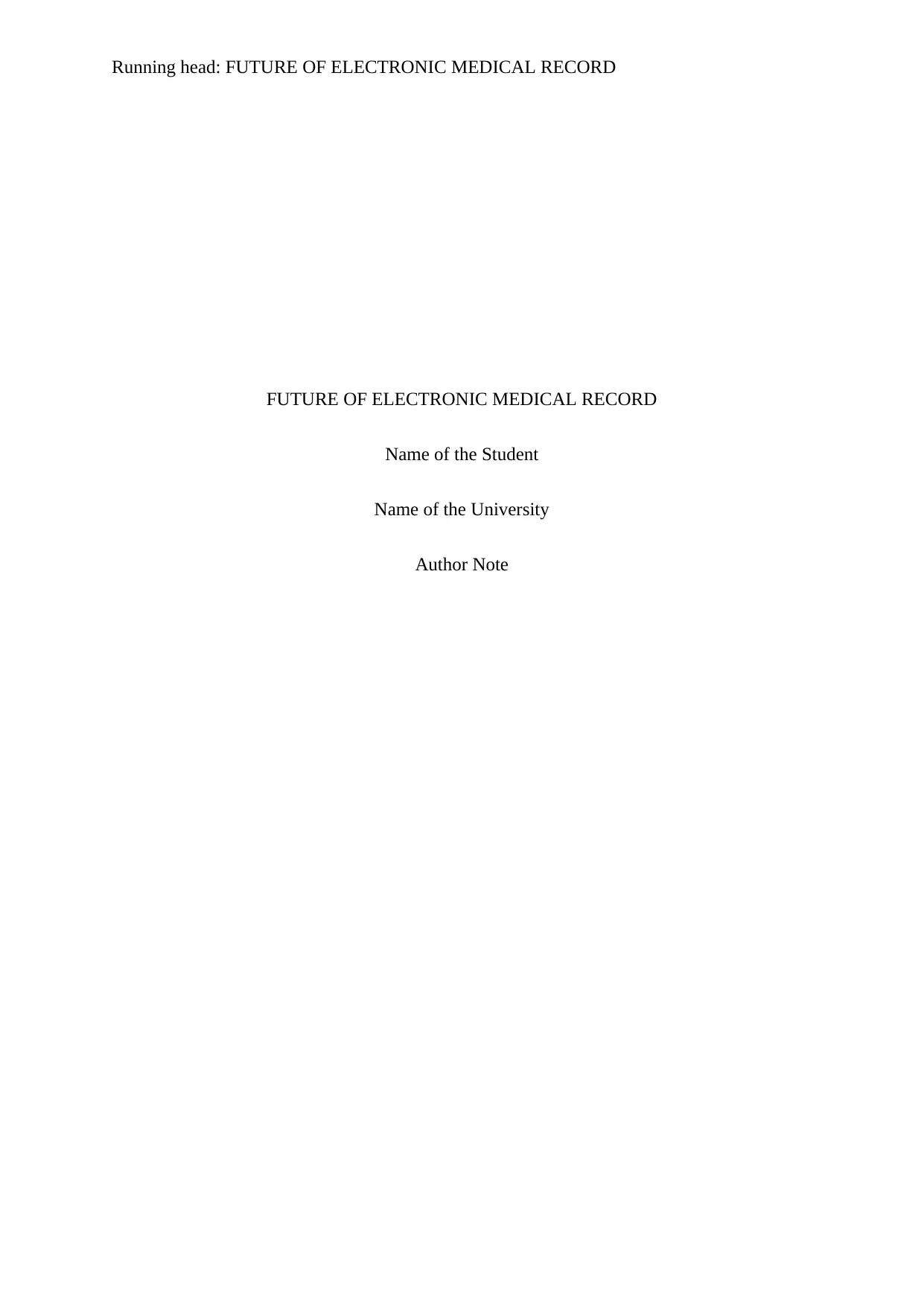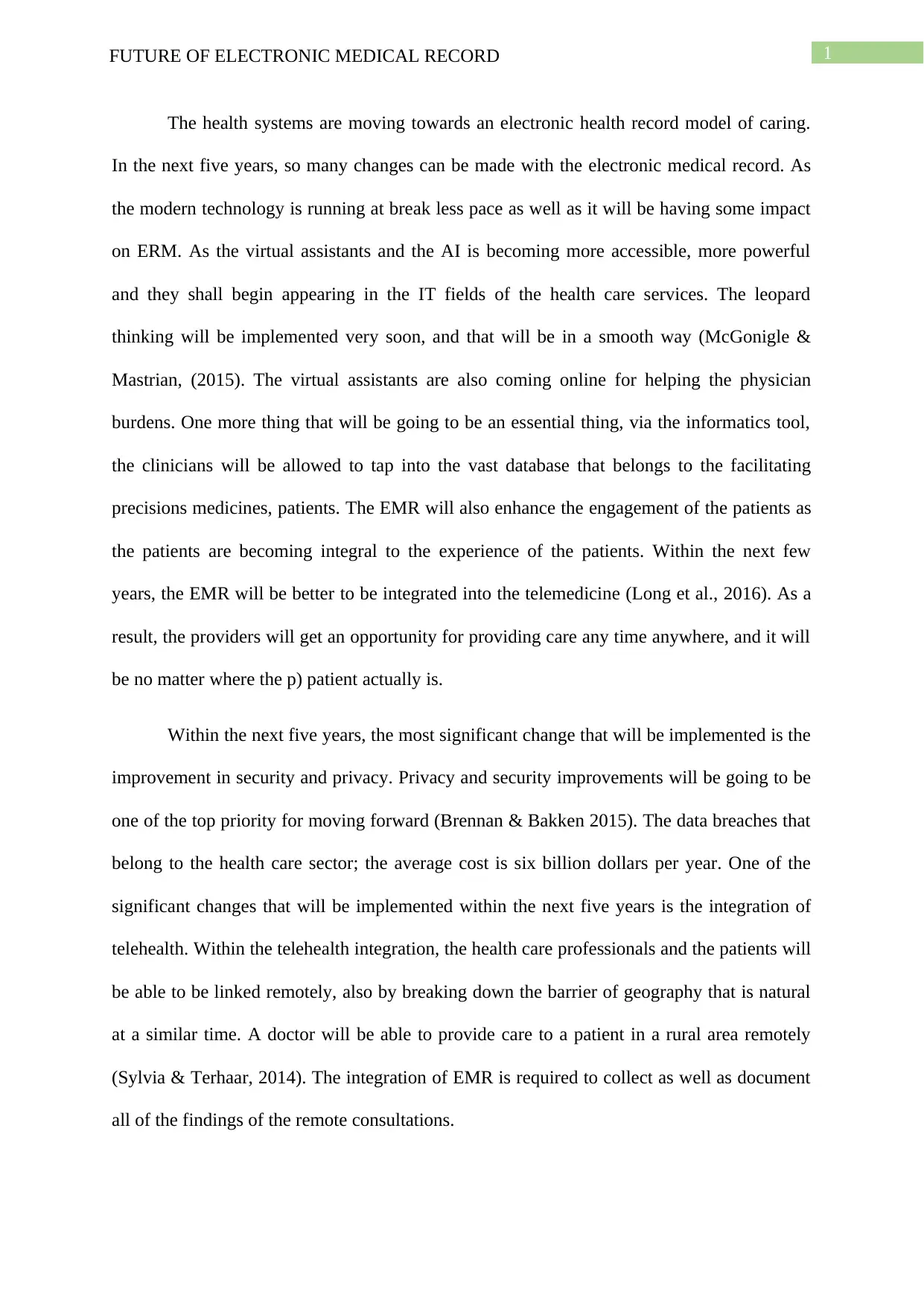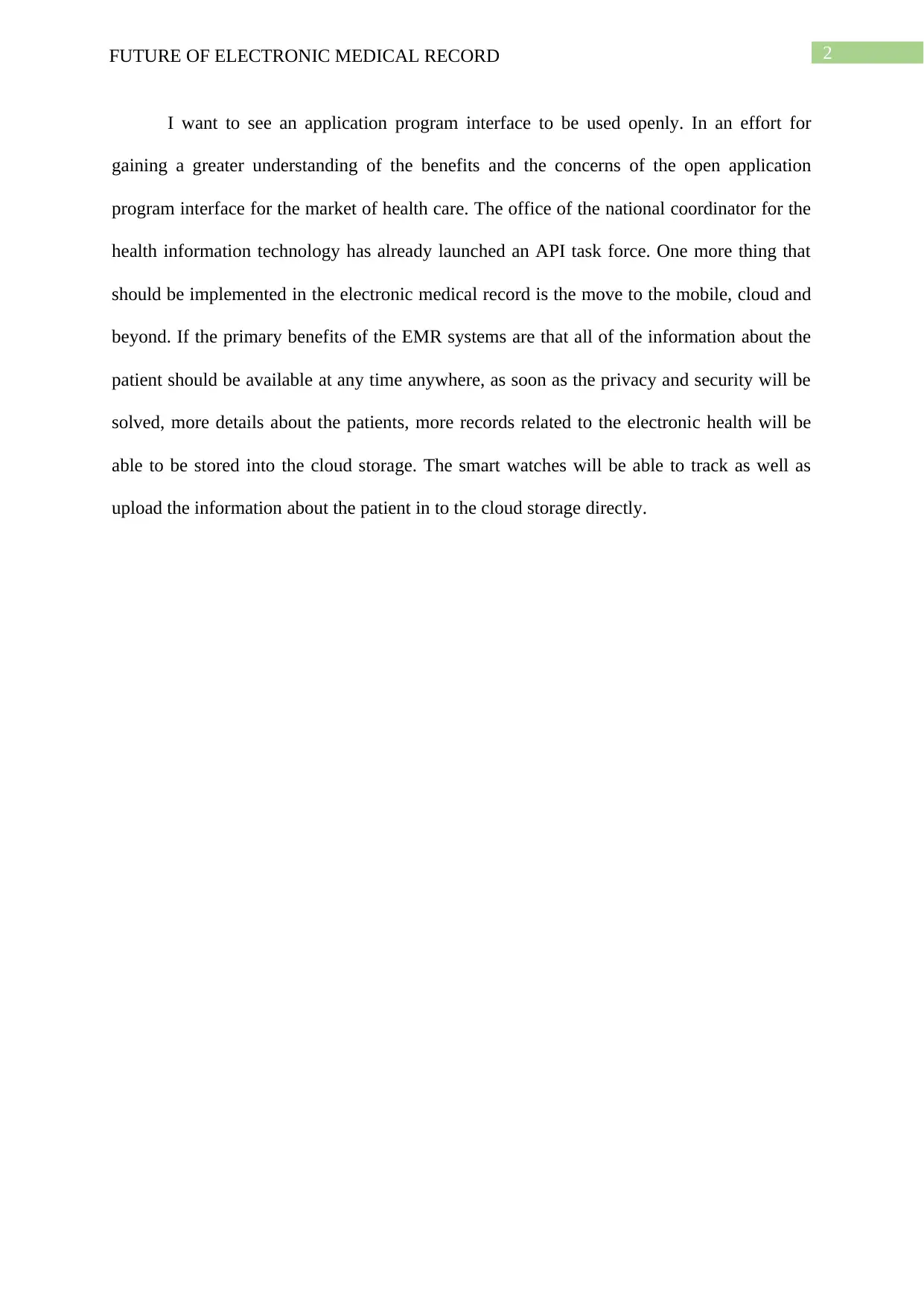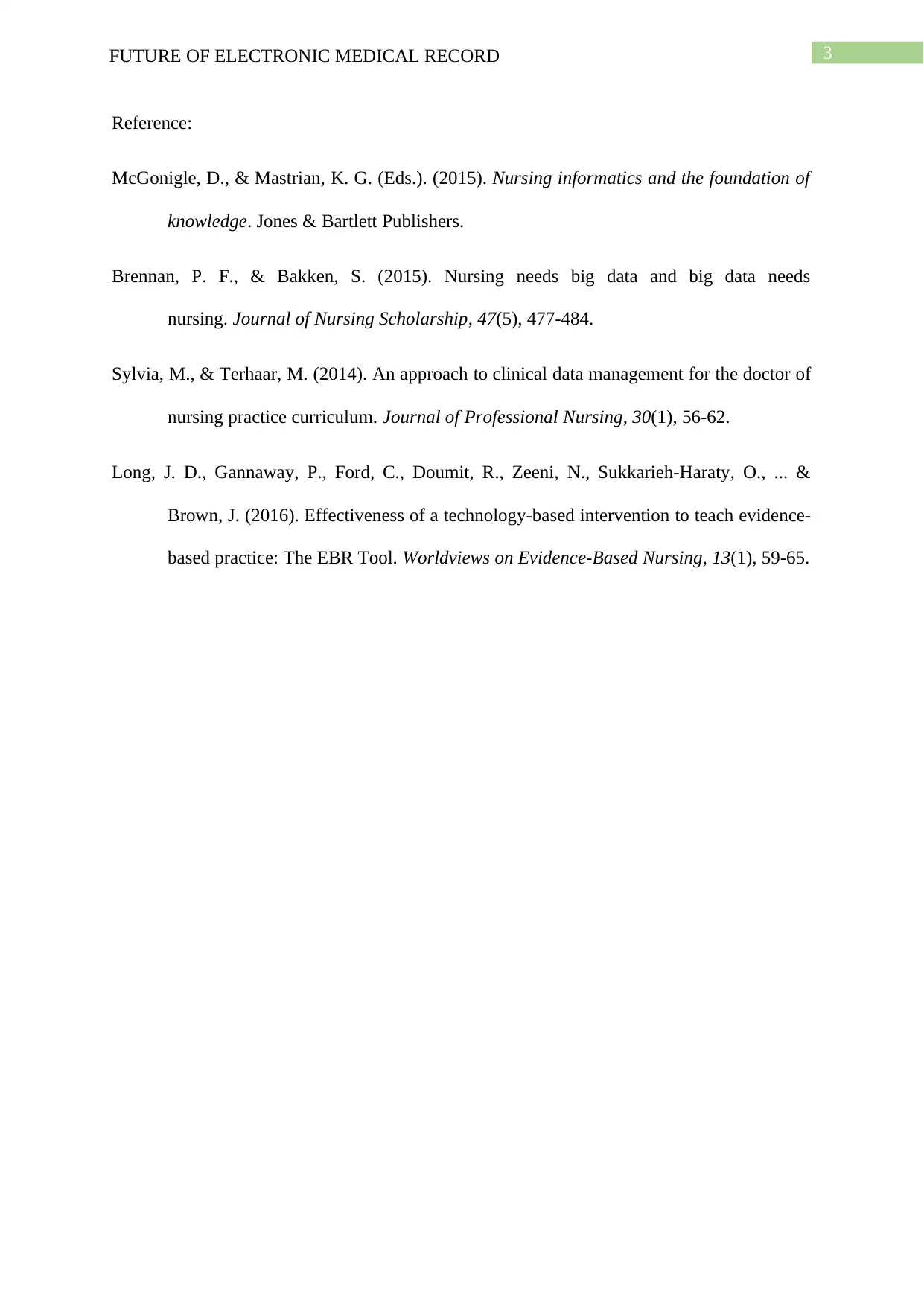Analyzing the Future of Electronic Medical Record in Healthcare
VerifiedAdded on 2023/04/24
|4
|783
|484
Report
AI Summary
This report examines the future of Electronic Medical Records (EMR) in healthcare. It anticipates significant changes in the next five years, driven by advancements in technology such as virtual assistants and artificial intelligence (AI), which will assist physicians and facilitate precision medicine through informatics tools. The EMR will enhance patient engagement and be better integrated with telemedicine, allowing providers to offer care remotely. Key priorities include improved security and privacy, addressing the high costs of healthcare data breaches. The report also highlights the importance of an open application program interface (API) for greater understanding and benefits. Furthermore, it discusses the shift to mobile and cloud-based storage, with smart devices contributing to patient data collection and storage. The report references key publications in nursing informatics and healthcare technology to support its findings.
1 out of 4











![[object Object]](/_next/static/media/star-bottom.7253800d.svg)